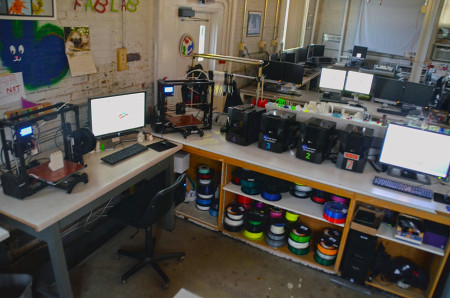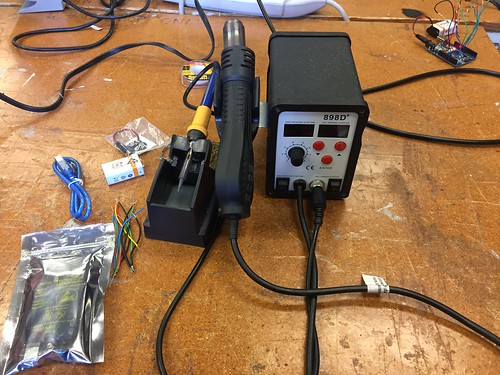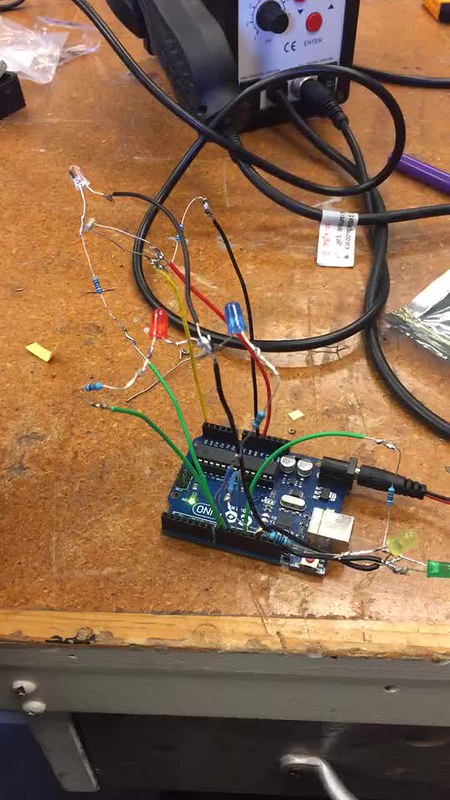It had been two weeks since Jeff Ginger, the director at the Illinois Informatics Institute, gave us a detailed introduction about 3D printing and talked about interesting stories happened in the Fab Lab. This week, we made our first visit to the Fab lab, an open and collaborative workshop space for computer-driven innovation on U of I campus. At the very beginning, Jeff led us to see the main functional areas in the lab. Basically, the lab had four main areas. Adjacent to the front door, 3D printing and scanning area allowed users to actually make their designs. On the same floor, there was a small room for making small electronics fabrication. Now, the room had been used for exploring bio-3D printing. Soldering and diagnostics room was on the second floor, and laser cutting room was on the third floor.
After a brief overview of the Fab Lab, we were divided into three groups, one for laser cutting, one for soldering, and one for coding. This week, I voluntarily joined into the soldering group because I had soldered circuit board in my high school. Though I have some experience, it had been 4 years since the last time I soldered circuit board and the project is much easier back in high school.
The main purpose of our assignments was to connect the LED lights, light sensor to a circuit board so that the system can automatically turn on the LED lights when the light sensor can’t detect light. Initially, we had Arduino circuit board, 5 LED lights, resistors, light sensors, wires, and soldiering iron in front of us. Under the instructions of Duncan and Andrea, I could solder the LED lights and wires correctly. I had to mention that the “helping hand” was a tool to hold wires for users to solder. However, we had more users than the holding tools and I did not have one. It was quite challenging to solder 3 wires together without the help of the holding tool. As a result, I failed much more times than my friends in the group. Despite of the unfavorable circumstances, I successfully soldered the wires and lights together. As you can see from the video below, the light will be turned on/off depending on the light detection of the sensor.
One of our proposal for our final projects is to make a light & noise detection lamp. After soldering this circuit board, I believe the lamp is much more doable than I previously thought. We will talk our ideas with the staff at Fab Lab to gather more information before deciding the final design.






